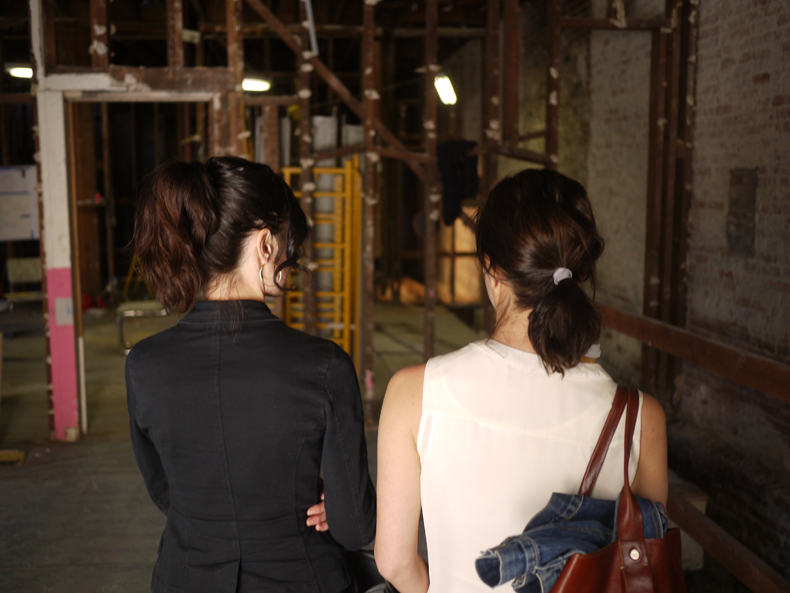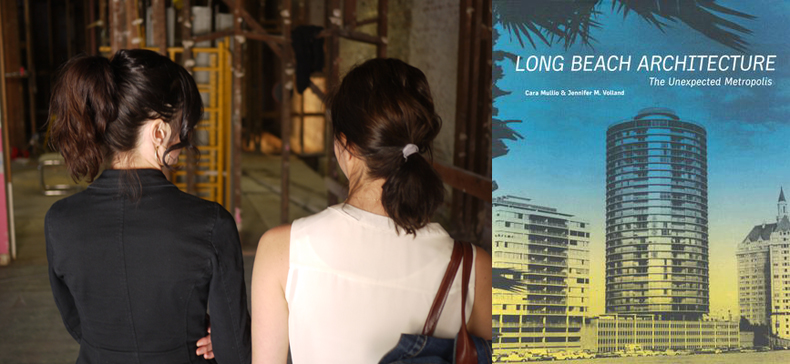Mar 05, 2013 Imprint Long Beach: Cara Mullio and Jennifer M. Volland on Long Beach Architecture and Edward A. Killingsworth

Since co-authoring the elegant and cool Long Beach Architecture: The Unexpected Metropolis (Hennessey + Ingalls, 2004), Cara Mullio and Jennifer M. Volland have been championing the city’s variety of architecture from Art Deco to Mid Century to contemporary. They have done it in talks, exhibitions, and bicycle tours. And at the next Imprint conference they will present their next book, which focuses on Long Beach-based Case Study House architect Edward A. Killingsworth (1917-2004).
ICL: I’m sure you didn’t expect Long Beach Architecture to make you the go-to spokespeople for architecture in the city.
CM: We knew there was a void and we knew that places like Montecito, Santa Barbara, and Pasadena had books about their cities. Those are sleeper towns and then here’s Long Beach, a vital, fantastic, diverse city. What was going on? Why had no one uncovered the rich architectural heritage here? We took it to a number of publishers and they didn’t feel it had a broad enough market.
But Hennessey + Ingalls believed in it. We raised all the money for pre-production through a grant. The book is now in its third printing and they can’t keep it on the shelves. Ten years later, it’s still relevant.
JM: The book appeals to different generations. Moms do the tour with their kids. Architects and designers have used it for reference. Realtors give it to their clients. And ninety-year-olds come up to us and say how much it means to them. There’s something in it for everyone.
CM: And yet we also wanted to break Long Beach’s image as solely a navy town. So we hired a designer to turn Long Beach on its head with the colors and the idea of bringing the past to the present.
ICM: It isn’t sepia toned at all! In effect, you have rebranded Long Beach.
JM: We tried to look at the city with new eyes. I think we are part of a new guard in Long Beach that can appreciate the idiosyncratic nature of the city. There are numerous historical- and preservation-related organizations in the city but, from the beginning, we made a commitment to be autonomous … and we want to stay that way.
ICM: What was your relationship with Edward Killingsworth, the Long Beach architect that your next book focuses on?
JM: The Killingsworth project is as old as Long Beach Architecture. As soon as we started researching Long Beach in 2003, we found this trove of Killingsworth projects and started interviewing him at his office on Long Beach Boulevard.
CM: Ruthann Lehrer, the Historic Preservation Officer for City of Long Beach at the time, hired us to conduct an oral history.
JM: Back then, the city’s preservation focus was 1940 and before. Lehrer recognized the important of bringing it up to the ’50s and beyond.
ICM: What prompted you to expand on that original research for the upcoming book?
CM: We started back then but couldn’t locate funding because no one knew Killingsworth. So we did speaking tours and then we were able to get a grant to secure his archives at UC Santa Barbara. Then we did an exhibition on a selection of Killingsworth’s unrealized projects. Then we did various lectures on this work. And finally we managed to raise the pre-production costs again, and Hennessey + Ingalls came on board as publisher.
ICM: Wow. Will the book be similar to Long Beach Architecture in form?
JM: We have a different designer but it’s structured somewhat similarly and there are elements that are similar. We start the book with an essay about his life and work and then we examine more than 40 key projects.
ICM: And you’ll be sharing some of them at April’s Imprint conference, right?
CM: Yes and, of course, Killingsworth’s life in Long Beach is woven into the projects. And if you market this conference to the architecture world and mention Killingsworth, an unknown figure in some circles, you will get a curious crowd.



